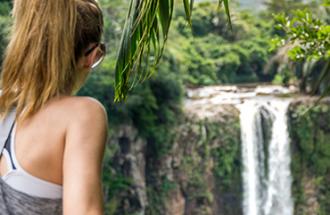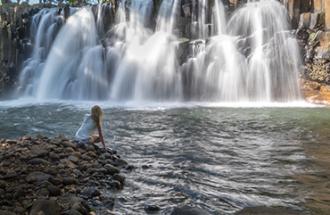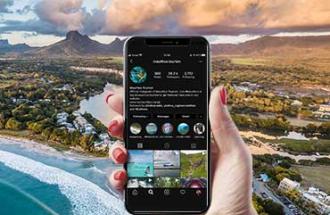South and South-East of Mauritius
South and South-East of Mauritius
The southern region of Mauritius, also known as the Wild South, is the most preserved part of the island; it stands out from the other regions with its incredible cliffs and impressive waves, creating a feeling of closeness to nature. The south and south-east offer magnificent views of the mountains and sugar cane fields as far as the eye can see. Many tourist operators from the region have chosen a sustainable development for their hotel and leisure projects, like the Domaine de Bel Ombre. The south of the island is also a concentrate of history, the region has witnessed the various landings of explorers during centuries and houses a lot of remnants from the past.
What to See?
The village of Mahebourg alone will require a full-day tour. The highly historical town was founded at the beginning of the 19th century by the French and was named after Mahé de Labourdonnais. The famous naval battle of 1810 took place in the lagoon, more precisely at Vieux Grand Port - the only French naval victory inscribed on the Arc de Triomphe in Paris. The village abounds of ancient vestiges recalling the different colonisations along time, as well as the period of slavery; you can still see the slaves’ wash house, among other protected monuments.
Pointe Canon
Pointe Canon is an interesting place to go to have a nice overview of the different sites surrounding Mahebourg. You will see the imposing Lion Mountain that overlooks the sugar cane fields, Mouchoir Rouge islet, facing the waterfront, and Ile aux Aigrettes further north, a small protected island located in the lagoon and which is also a nature reserve. Pointe Canon is the place where the inhabitants of the region meet during events such as regattas and the commemoration of the abolition of slavery celebrations in February.
The Naval Museum
The Naval Museum in Mahebourg is a highly historical place, not only because of the artefacts preserved therein, but also for the building itself. Learn about the maritime history of Mauritius through a series of well-kept treasures: paintings, lithographs, statues, objects. You will even come across the old wagon of the governor in the yard! Make a big leap into the past... The house built during the second half of the 18th century, known as Maison Robillard named after its owners, had been converted into a hospital after the Battle of Grand Port in 1810, and later purchased by the British authorities in 1950.
Cavendish Bridge
The Cavendish Bridge, also known as Ville-Noire Bridge: one cannot miss this outstanding bridge when leaving Mahebourg towards the north. This concrete structure of more than 150 metre long, spanning La Chaux River, was designed by French engineer Paul Le Juge under the government of Sir Cavendish Boyle, whose name was given to the bridge. Completed and inaugurated in 1911, it was restored on the occasion of its centenary in 2011. You can safely walk along the longest bridge of the island, on its new pedestrian path, to connect the small village of Ville-Noire on the other side.
Ferney
Ferney, next to Mahebourg, also played an important role in the history of Mauritius having been the landing place of the Dutch in 1598. A memorial was erected on the shore. From there, you will be surrounded by the ocean on one side, and the sugar cane fields and the Lion Mountain on the other. A few minutes away, you will reach the Vallée de Ferney, a vast valley which is house to various species of endemic animals and trees. You can choose to go hiking by yourself or be accompanied by a guide. Nearby, Falaise Rouge unveils a beautiful view on Fouquets and La Passe islands in the lagoon.
Pointe du Diable
Pointe du Diable, also called known as Pointe Canons, is located on the coast when leaving Vieux Grand Port, heading north. You will easily find this former French defence post on the road, set up tp defend the island from the British invaders, with its series of old cannons facing the sea. This name, understand “Devil’s Point”, comes from the first navigators who had their compasses showing various directions at this place for no reason according to them… but it was evntually found that there is a magnetic field in the mountain nearby influencing the compasses.
Ile aux Aigrettes
Leaving Mahebourg towards the south, Ile aux Aigrettes will offer a unique experience with nature. This island, located halfway between Mahebourg and Pointe d'Esny, is a nature reserve managed by the Mauritian Wildlife Fund. It is part of a conservation and rehabilitation programme for Mauritian indigenous and endemic fauna and flora. Within a few minutes by boat from the coast, you will see animals and plants that do not live on the main island, for some of them, including the Telfair Skink. Sculptures have also been placed along the tracks to represent extinct species, including the owl (yes, there were owls in Mauritius!) and the giant turtle, today replaced by its cousin from Aldabra who is similar to it. Experienced guides will accompany you and relate the huge conservation work achieved during the past decades.
Blue Bay Marine Park
After Ile aux Aigrettes, southbound to Pointe d'Esny and its white sandy beach, and Blue Bay, a popular beach for local picnickers and a protected marine park. Go for some snorkelling to admire the undersea flora and fauna, and if you don’t want to get wet, hop on a glass-bottom boat, you will easily find one on the beach.
Gris-Gris and its beautiful surroundings
If you continue your journey towards the south, there are several stopovers to make in Souillac: Le Souffleur, La Roche qui pleure, Gris-Gris and Rochester Falls. Although this part of the Mauritius is not suitable for swimming, many unspoiled sites are to be discovered, as well as its history.
Nature bursts in the south! Stop at Le Souffleur to see the water spring into the air like a geyser during high tides. With the help of the wind, the water jets sometimes reach 30 meters.
A few minutes away, in Gris-Gris, La Roche qui pleure represents the profile of the Mauritian poet Robert Edward Hart, sculpted in the cliff by the elements, according to local legends... Below, you will see the mouth of Bain des Négresses river flowing into the ocean. Take a breath of fresh air on the cliff at Gris-Gris public beach in front of the impressive waves, before heading to one of the restaurants nearby to enjoy a traditional local meal.
Robert Edward Hart was a Mauritian poet who has touched generations on the island and in the Indian Ocean. A few minutes from Gris-Gris, in Souillac, a museum is dedicated to him at La Nef, a house entirely made of coral and donated by his friends.
Next door, the beautiful garden of Telfair is the ideal place for a stroll on the seafront of Souillac, under the magnificent centenary trees; it is the usual meeting point for the people living in the vicinity. You will come across some remains of the history and heritage of Mauritius in the heart of the village.
Rochester Falls is one of the most popular tourist sites in Mauritius. Located on the border of Souillac, the waterfall is made up of unique angular basaltic columns. Local youth often perform as they dive from the top of the waterfall.
Rivière des Galets
Rivière des Galets features a different scenery on the coast. A beach made up exclusively of pebbles stretches in front of you. No swimming, but it is a privileged spot for seasoned surfers, and you can just sit and simply enjoy nature. In the bay of Rivière des Galets, stands Ilot Sancho, a tiny island that can be of interest for the curious.
Baie du Cap scenic route
On the way to the south-east, you will reach Baie du Cap, a small fishing village, and Macondé view point, the most photographed spot in Mauritius. Baie du Cap road is known as one of the most beautiful scenic routes of the island. A stopover is essential, one cannot drive through Baie du Cap and not climb up this famous natural promontory with its breath-taking view of the ocean. Macondé is also stunning seen from the sky! If you have some time, take a walk in the surroundings to meet locals and have a meal in one of the small restaurants or snacks in the area.
Things to do in Mahebourg
In the centre of Maheboug, if you take the time to wander around, you will find typical culinary treasures from Mauritius: all kinds of spices, dholl puris, “gateaux piment” (chilli cakes), bryani and other delicacies forming part of the Mauritian street-food. You will also find a wide array of clothes and souvenirs in the various shops along the streets and at the market, next to the waterfront. There are also some commercial centres that opened their doors recently on the outer boundary of Mahebourg.




